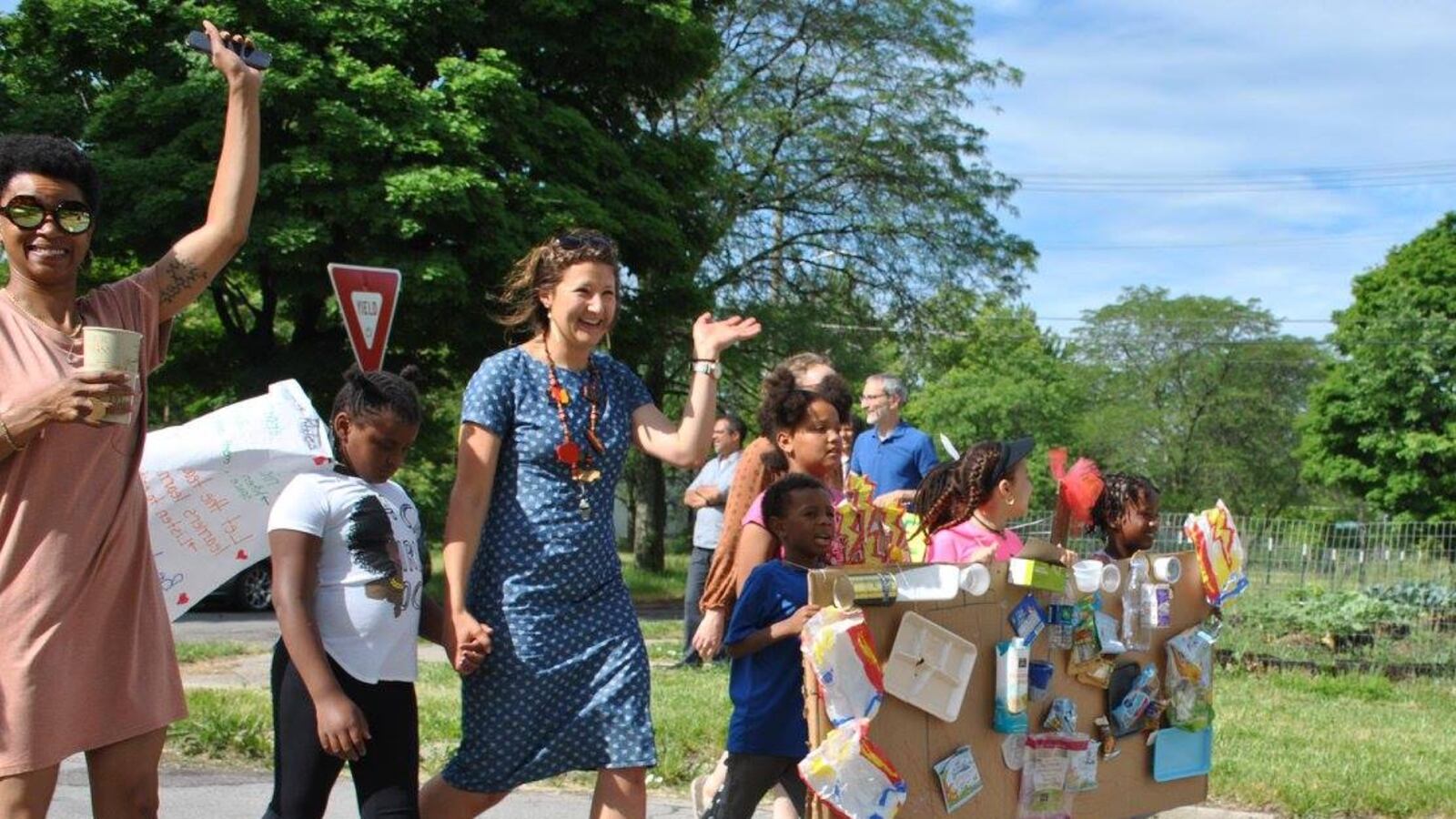Here, in a feature we call How I Teach, we ask educators who’ve been recognized for their work how they approach their jobs. You can see other pieces in this series here.
Last year, a first grader at the James and Grace Lee Boggs School in Detroit came into class with a question: What is the Detroit incinerator and is it polluting our neighborhood?
His question sparked the curiosity of his classmates and led to a teaching unit and a short film made with help from a local artist, said his teacher Kelly Rickert, 27, who teaches a combined class of first- and second-graders.
“One of my students came in really fired up about the Detroit incinerator, saying, ‘It pollutes the air! Why is it here?’” she recalled. “We researched the incinerator, learned about zero-waste lifestyles, and looked into the reduction of trash.”
Incorporating real-world questions about the students’ community into a lesson is known as place-based education — a centerpiece of the Boggs School’s philosophy. The charter school, on the eastside of Detroit, was opened in 2013 as a tribute to its namesakes, longtime civil rights and community activists in the city.
“A lesson should stem from a student’s inquiry. Then there’s some sort of civic outcome, usually tied to sharing your learning,” Rickert said. “So, we’re not just learning for ourselves, but there’s a purpose for it.”
Artist Matthew Daher worked with Rickert’s class to create a short film called “Trash Life” from what the children learned, through a media arts program called People in Education.
We asked Rickerts to tell us more about her approach and about the video, which you can watch below. (This interview has been edited and condensed for clarity.)
Was there a moment when you decided to become a teacher?
I got into it for social justice reasons. I’ve always loved learning and I’m so excited about sharing that with students.
How do you get to know your students?
At the beginning of the year we do a lot of ‘getting to know you’ games, and I can take time to get to know them in a casual way. We always start off the year by naming things we are interested in and want to learn about. During one of the games, students say what they like, and other students respond ‘Just like me!’ if they have something in common.
Tell us about a favorite lesson to teach. Where did the idea come from?
When we learn about digestion and nutrition, we use food magazines and cut out different foods and sort them into food groups, and the kids think that’s really fun. The idea came to me when some of my students were collaging in art class and made me a card.
What object would you be helpless without during the school day?
I use my phone in a Bluetooth speaker a lot to listen to different songs and classroom playlists during different parts of the day. We take dance party breaks and play freeze dance and the kids suggest songs to add to that playlist. And a clipboard!
Tell us about a memorable time — good or bad — when contact with a student’s family changed your perspective or approach.
All students want you to point out the good things they do. At the start of the year, I had a student who was a stressful one on my radar. I started sending messages home to his mom when he was doing really well, and she said it made a huge difference for him.
What part of your job is most difficult?
The amount of emotional and social energy — it’s also the part I love the most. I’m interacting pretty nonstop for eight hours with 20 other people all day. I come home and need to be alone for at least an hour. It makes it hard to have energy for other relationships in life.
What was your biggest misconception that you initially brought to teaching?
That good teaching was controlled and comfortable. It can be uncomfortable to be in a chaotic room when you’re charged with getting students learning, but now I know that good learning is not input/output. We’re not machines — there’s always a level of unexpected.
What are you reading for enjoyment?
I’m reading a few things. The one I’m enjoying the most is a magazine called “The Sun,” and I’m also reading the “Woman in the Dunes” by Kobo Ebe.
What’s the best advice you’ve received about teaching?
The one that stands out to me the most is, ‘The day you feel like you know everything about teaching is the day you should retire.’ It’s a job where you never stop learning, and that’s something that’s enticing to me.
Watch Trash Life, made by students at the Boggs School, artist Matthew Daher, teacher Kelly Rickert, and People in Education researcher, Ever Bussey below. And, if you know a teacher who should be featured in a future How I Teach, please let us know.

